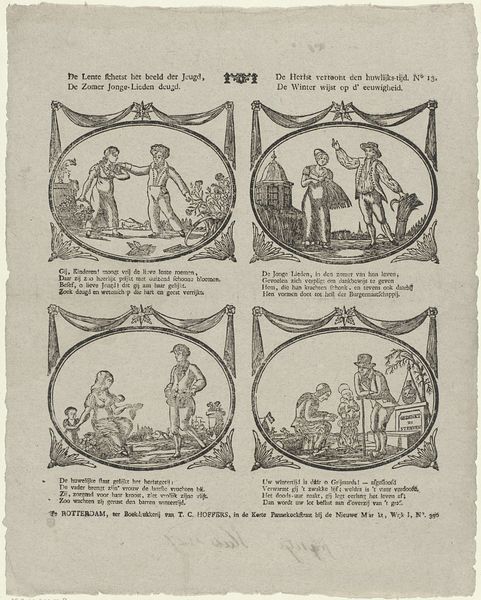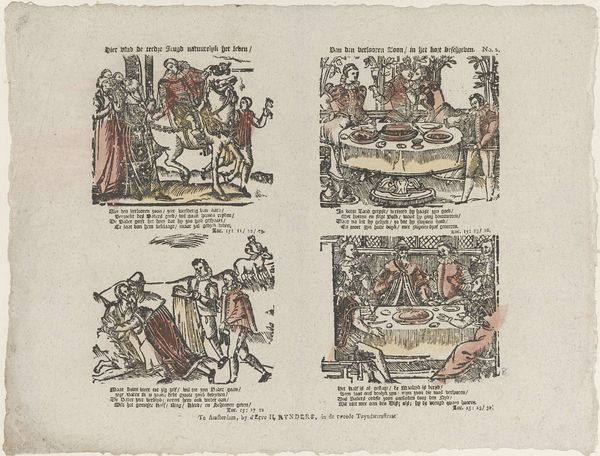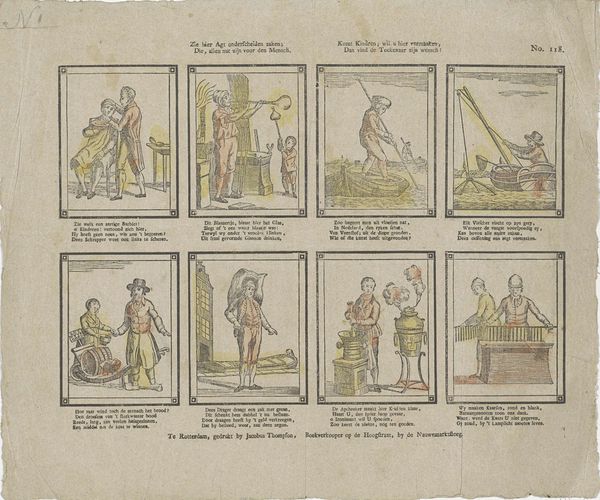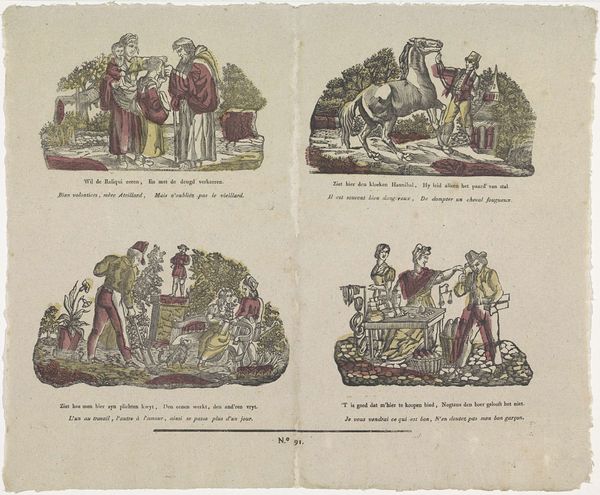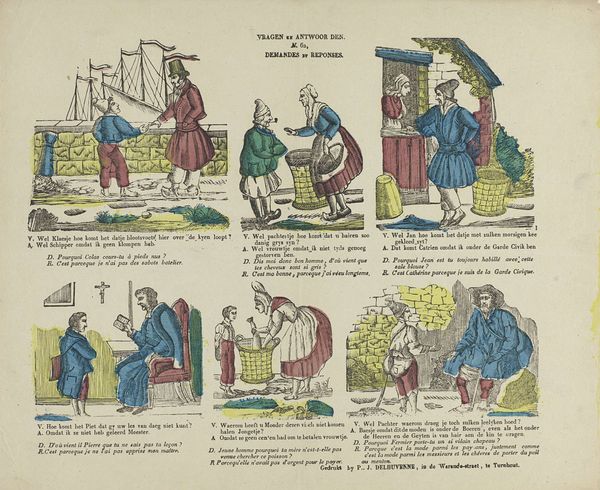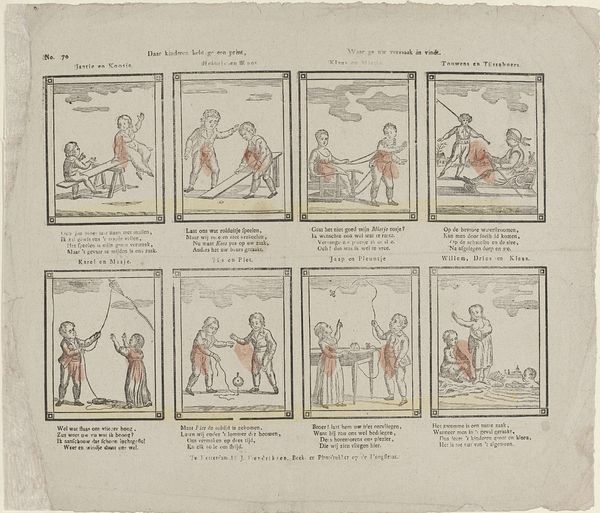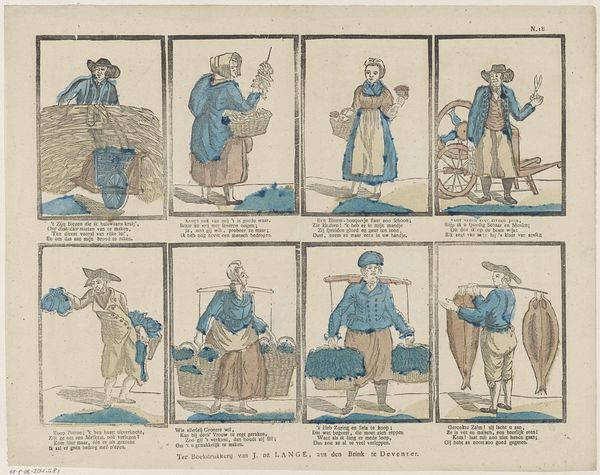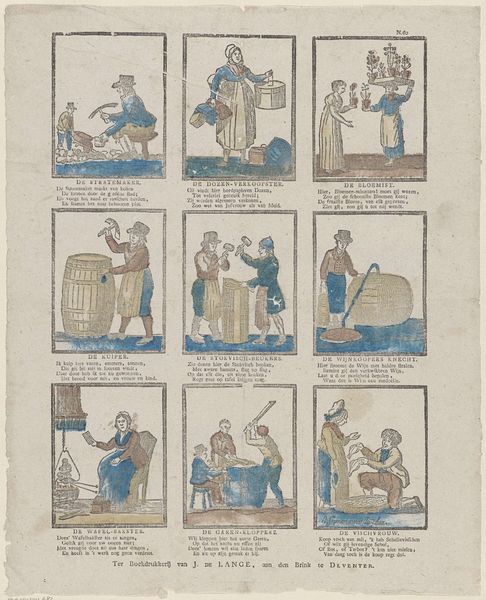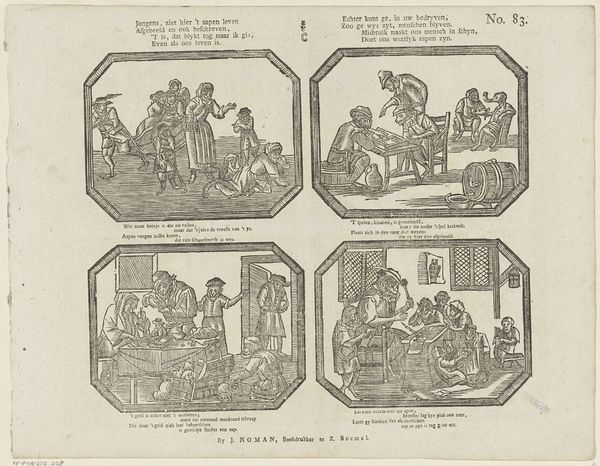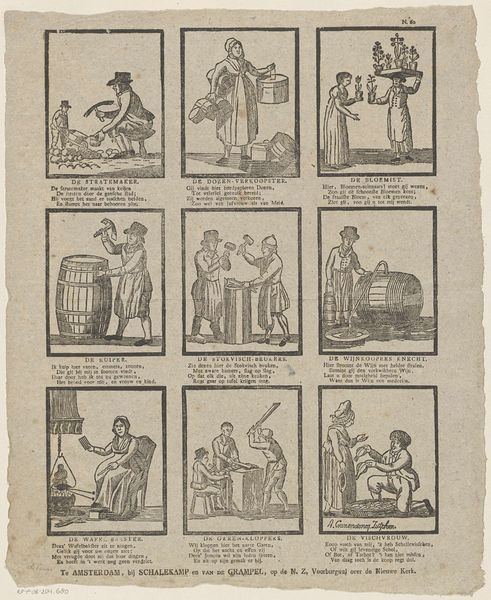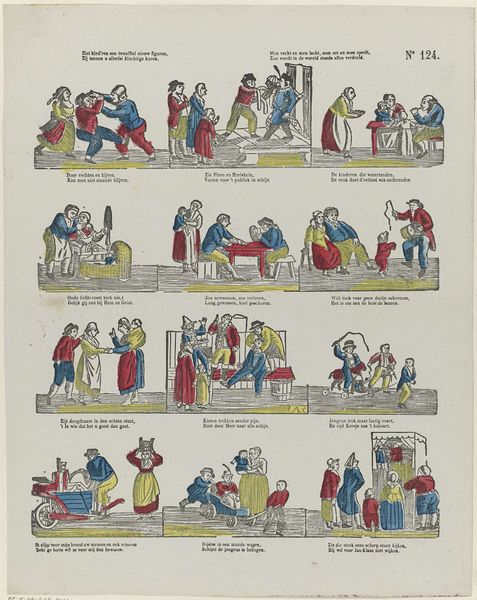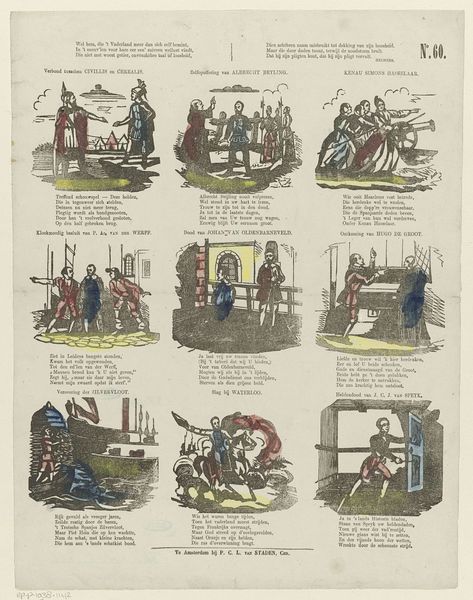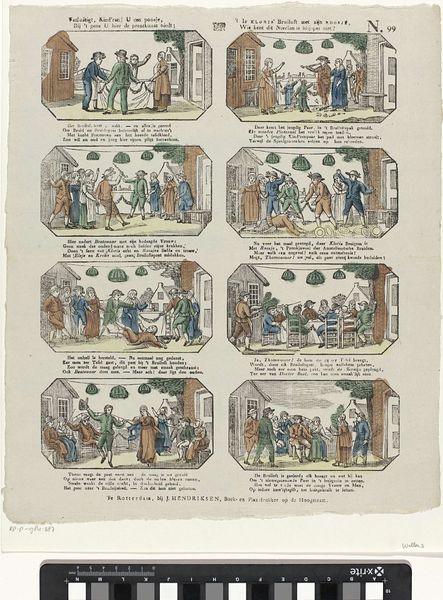
De lent schetst het beeld der jeugd, / De zomer jonge-lieden deugd. / De herfst vertoont den huwelijks-tijd. / De winter wijst op d' eeuwigheid 1820 - 1838
0:00
0:00
drawing, print, paper, pencil, engraving
#
drawing
# print
#
paper
#
romanticism
#
pencil
#
genre-painting
#
engraving
Dimensions: height 416 mm, width 333 mm
Copyright: Rijks Museum: Open Domain
Curator: Here we have a print titled "De lent schetst het beeld der jeugd, / De zomer jonge-lieden deugd. / De herfst vertoont den huwelijks-tijd. / De winter wijst op d' eeuwigheid," created between 1820 and 1838 by Christiaan Jacob Schuyling. The artwork, crafted with drawing, pencil, and engraving on paper, reflects a Romanticist style and thematically explores genre-painting. Editor: Immediately, I'm struck by its compartmentalized, almost pedagogical arrangement. Four distinct oval scenes, likely representing the four seasons mentioned in the title, create a structured, didactic feeling. It's charmingly quaint in its presentation. Curator: The very structure directs our eye, prompting us to consider each vignette not just aesthetically but conceptually as well. We are invited to observe life’s progression: youth, adulthood, marriage, and old age reflected as the natural world cycles around us. The neat symmetry emphasizes order and purpose. Editor: And perhaps reveals certain societal expectations inherent to each of those stages. Notice the pairing of women and labor or domesticity. The ‘summer’ panel, for example, features a young woman giving food or clothing – potentially charity – to a seated figure. It’s easy to romanticize seasonality and natural processes, but this visual storytelling may communicate restrictive gender roles. Curator: From a purely visual standpoint, I appreciate how the artist uses line to differentiate the foreground from the background in each scene. Observe how details within each oval -- figures, architecture, landscape -- help generate depth. It demonstrates technical skill despite the small format. Editor: That’s valid, though my reading is influenced by where and when the work originates. Knowing the piece comes from Rotterdam, we can contextualize it against that period's emphasis on domestic virtues and civic responsibility. Are the details supporting artistic excellence, or endorsing existing socio-economic inequalities? Curator: Do you suggest an aesthetic deconstruction diminishes its possible sentimental appeal? It speaks directly using allegory that moves beyond a temporal association. Note how the work’s physical materiality is both decorative and instructional. Editor: I agree that the cyclical presentation is appealing. Schuyling seems to comment on continuity as well as expectations. My perspective is to invite examination of assumptions or implications through that lens. Curator: Thank you for enriching this analysis by highlighting those layers. It underscores art's unique capacity to be beautiful and meaningful across timelines. Editor: Likewise. Looking more attentively prompts me to note the engraving offers an instructive look, quite literally offering lessons in life to whomever might stop and see themselves and their own world reflected.
Comments
No comments
Be the first to comment and join the conversation on the ultimate creative platform.
